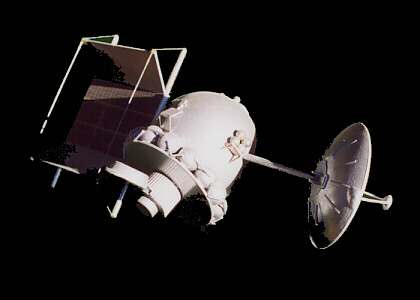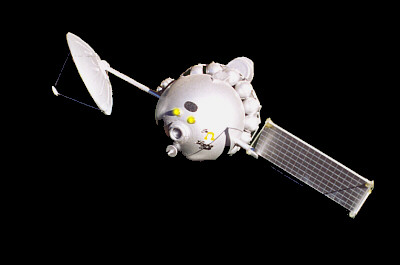A Covered Wagon for the High Frontier
"...not one but all of our crisis problems can be solved by exploiting space." - Robert A. Heinlein, 1950

In his famous non-fiction book, The High Frontier, the late visionary physicist Gerard K. O'Neill described a practical plan for constructing orbiting solar power satellites that would solve the vast majority of the world's energy needs for many centuries to come. But solar "powersats" are only part of this positive vision for humanity's future;  O'Neill also discussed how large space colonies could be constructed utilizing lunar resources and how immigrants from mature colonies might one day set out for the limitless resources of the asteroid belt. In Chapter 11, "Homesteading the Asteroids", O'Neill speculates on how a pioneer family of the future might set out from a Lagrange colony in a "wagon train" of homebuilt spaceships. O'Neill describes such a vessel as having a spherical hull about three stories high and made from aluminum (see the drawing from page 239 at right). This ship would have an enclosed rocket motor and a large dish antenna. Such a ship would be a true deep-space vessel and would not have to be built to withstand high acceleration or atmospheric flight.
O'Neill also discussed how large space colonies could be constructed utilizing lunar resources and how immigrants from mature colonies might one day set out for the limitless resources of the asteroid belt. In Chapter 11, "Homesteading the Asteroids", O'Neill speculates on how a pioneer family of the future might set out from a Lagrange colony in a "wagon train" of homebuilt spaceships. O'Neill describes such a vessel as having a spherical hull about three stories high and made from aluminum (see the drawing from page 239 at right). This ship would have an enclosed rocket motor and a large dish antenna. Such a ship would be a true deep-space vessel and would not have to be built to withstand high acceleration or atmospheric flight.
Above and below are pictures of my model of a typical "homesteader" spaceship such as O'Neill described. The 1/200 scale model of the Virginia Belle was largely scratchbuilt with the large dish antenna and forward docking hatch scavanged from plastic model kits. I embellished on O'Neill's description by adding a large solar cell array with sunlight concentrating aluminum mirrors for electrical power, a pair of large headlights for working in deep shadow, a forward looking radar, and auxilliary tanks to my ship. Like my other conceptualspacecraft models, this ship is less science fiction and more serious speculation.

If you haven't ever read The High Frontier, then I strongly recommend that you do so. You'll find it as enthralling as a good hard SF novel, but keep in mind that this isn't science fiction. If enough of us set our minds to it, this vision of the future can be made to happen. That makes it all the more exciting to me.